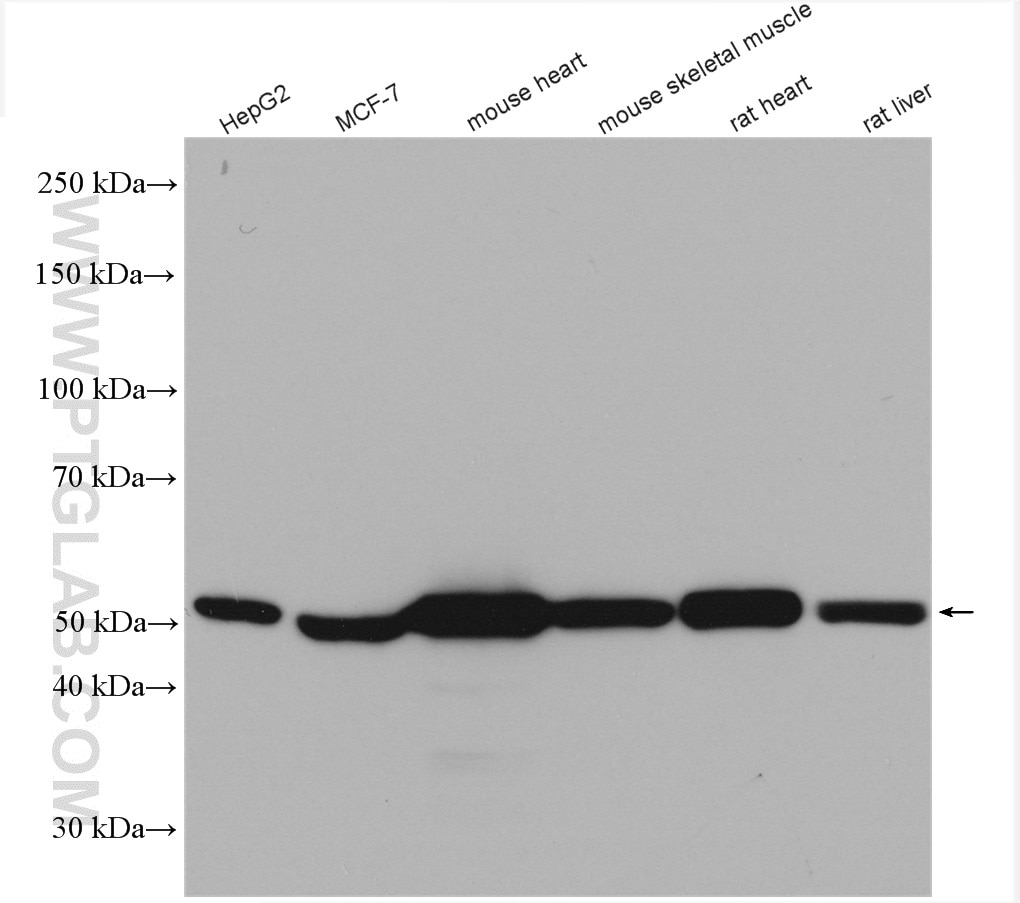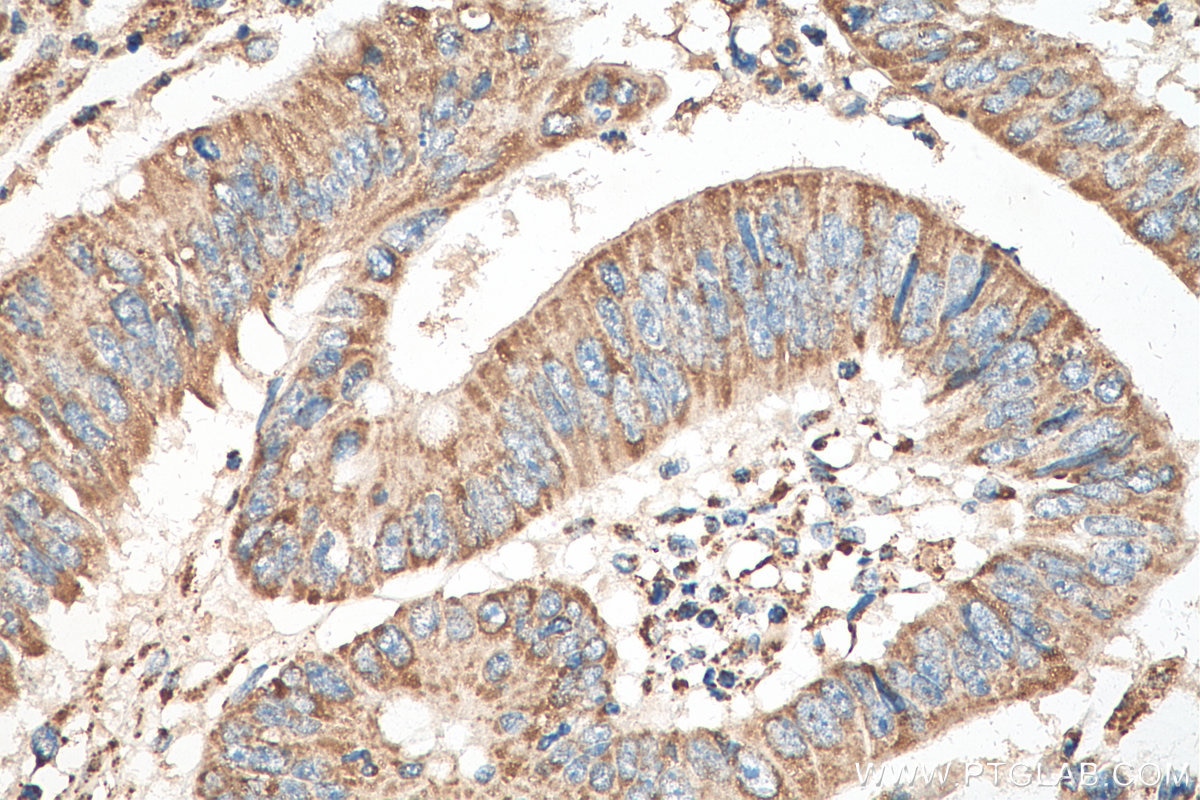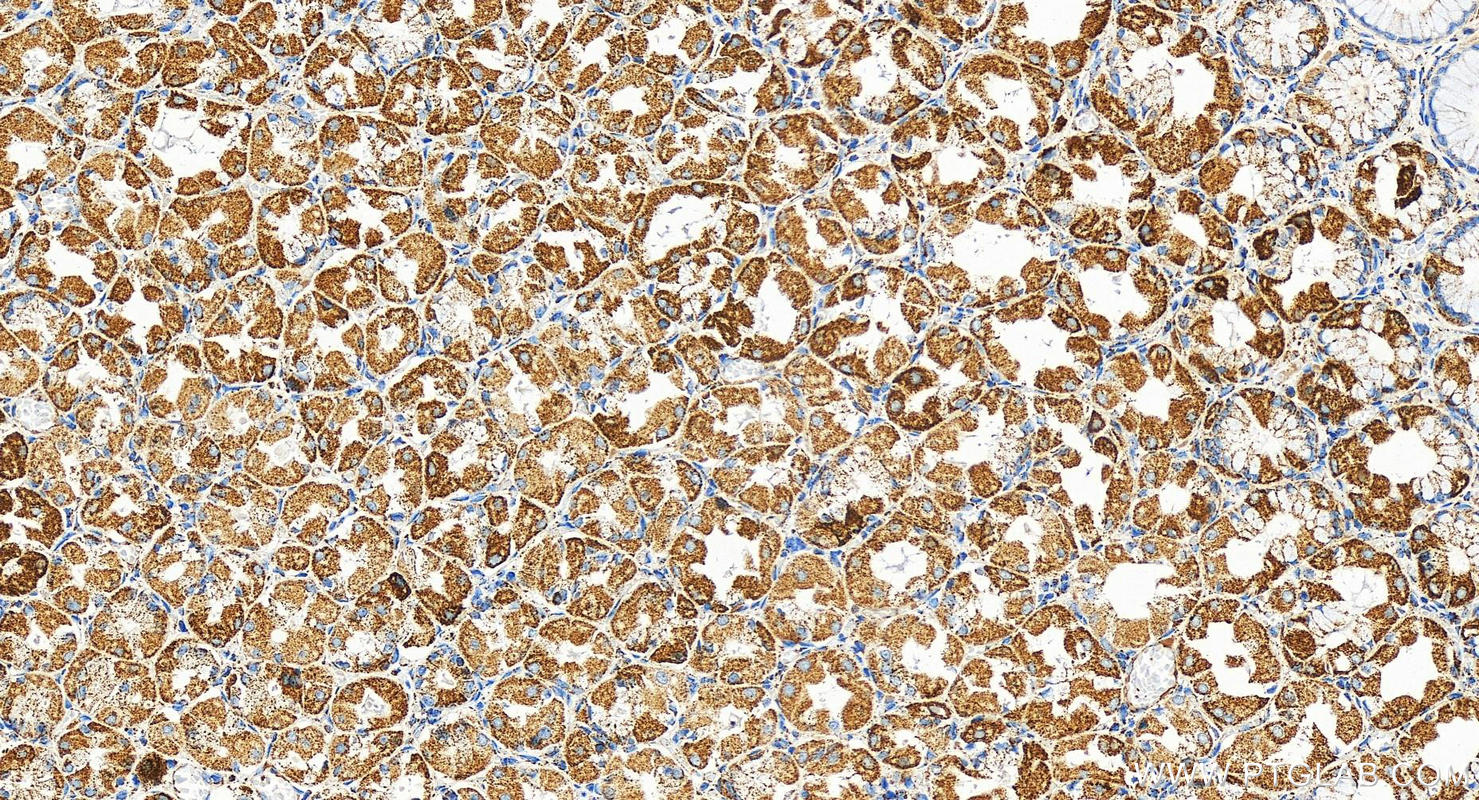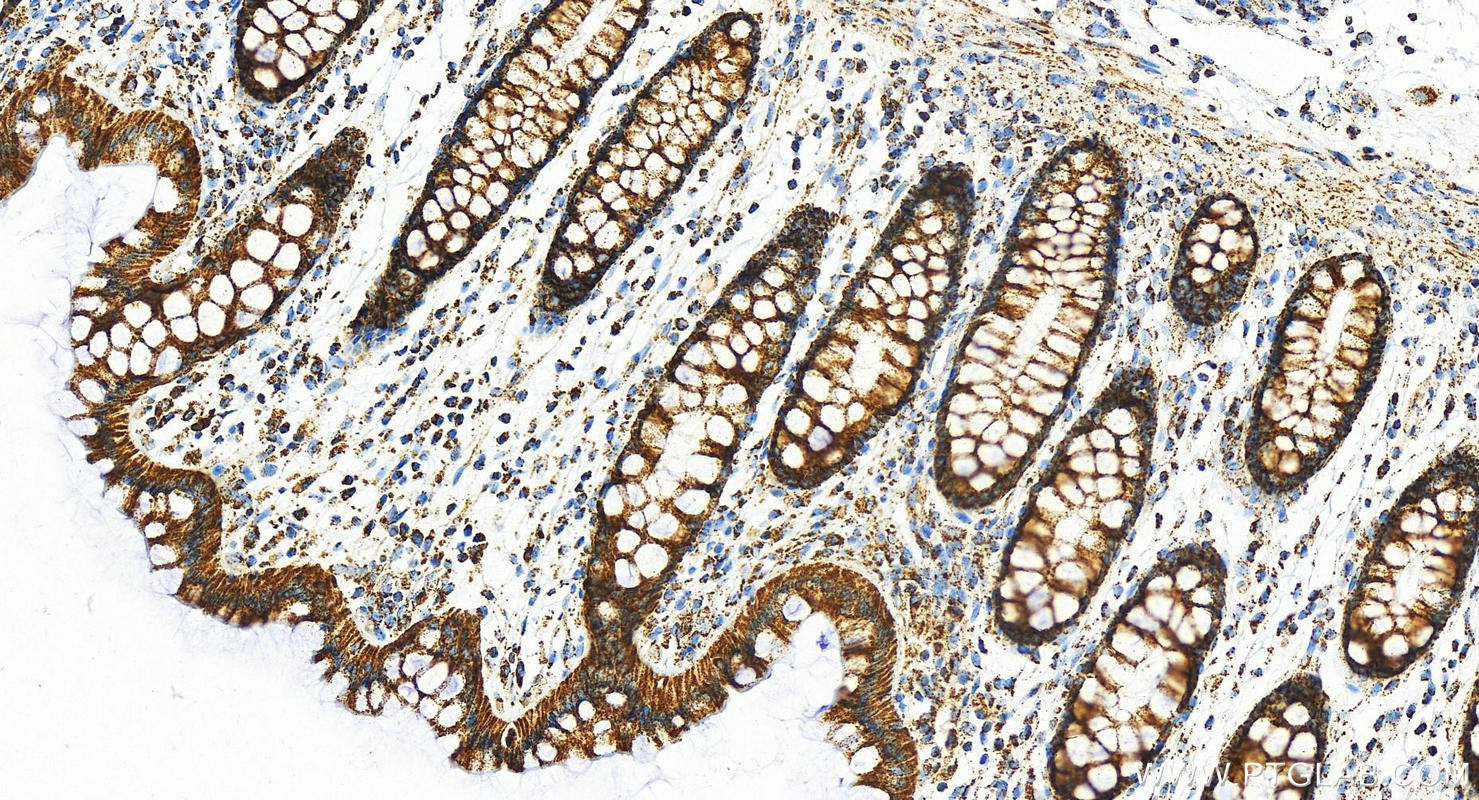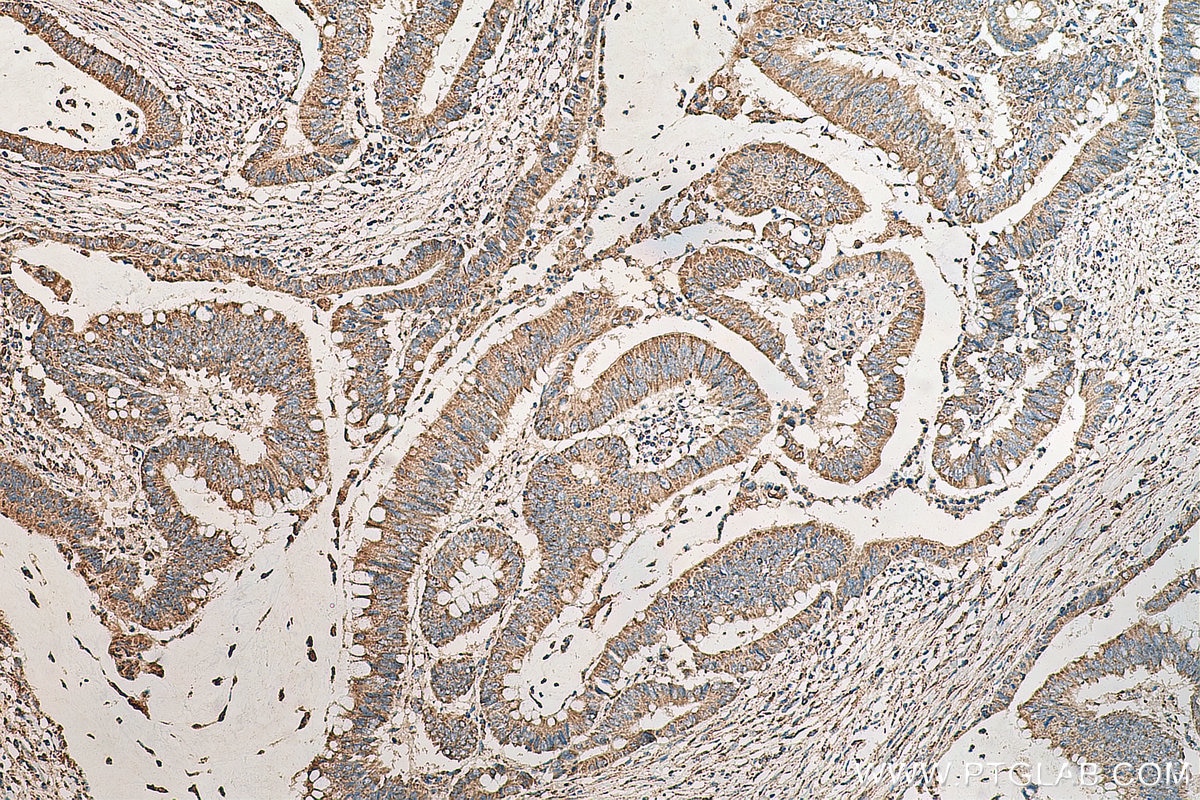Validation Data Gallery
Tested Applications
| Positive WB detected in | HepG2 cells, MCF-7 cells, mouse heart tissue, mouse skeletal muscle tissue, rat heart tissue, rat liver tissue |
| Positive IHC detected in | human stomach tissue, human colon, human colon cancer tissue Note: suggested antigen retrieval with TE buffer pH 9.0; (*) Alternatively, antigen retrieval may be performed with citrate buffer pH 6.0 |
Recommended dilution
| Application | Dilution |
|---|---|
| Western Blot (WB) | WB : 1:1000-1:8000 |
| Immunohistochemistry (IHC) | IHC : 1:500-1:2000 |
| It is recommended that this reagent should be titrated in each testing system to obtain optimal results. | |
| Sample-dependent, Check data in validation data gallery. | |
Published Applications
| KD/KO | See 2 publications below |
| WB | See 8 publications below |
| IHC | See 2 publications below |
Product Information
29091-1-AP targets HADHB in WB, IHC, ELISA applications and shows reactivity with human, mouse, rat samples.
| Tested Reactivity | human, mouse, rat |
| Cited Reactivity | human, mouse, rat |
| Host / Isotype | Rabbit / IgG |
| Class | Polyclonal |
| Type | Antibody |
| Immunogen | HADHB fusion protein Ag30298 相同性解析による交差性が予測される生物種 |
| Full Name | hydroxyacyl-Coenzyme A dehydrogenase/3-ketoacyl-Coenzyme A thiolase/enoyl-Coenzyme A hydratase (trifunctional protein), beta subunit |
| Calculated molecular weight | 51 kDa |
| Observed molecular weight | 52 kDa |
| GenBank accession number | BC017564 |
| Gene Symbol | HADHB |
| Gene ID (NCBI) | 3032 |
| RRID | AB_2918233 |
| Conjugate | Unconjugated |
| Form | Liquid |
| Purification Method | Antigen affinity purification |
| UNIPROT ID | P55084 |
| Storage Buffer | PBS with 0.02% sodium azide and 50% glycerol{{ptg:BufferTemp}}7.3 |
| Storage Conditions | Store at -20°C. Stable for one year after shipment. Aliquoting is unnecessary for -20oC storage. |
Background Information
HADHB, also named as TP- beta, Acetyl-CoA acyltransferase and Beta-ketothiolase, is a mitochondrial trifunctional enzyme subunit beta. Mitochondrial trifunctional enzyme catalyzes the last three of the four reactions of the mitochondrial beta-oxidation pathway. The mitochondrial beta-oxidation pathway is the major energy-producing process in tissues and is performed through four consecutive reactions breaking down fatty acids into acetyl-CoA. Among the enzymes involved in this pathway, the trifunctional enzyme exhibits specificity for long-chain fatty acids. Mitochondrial trifunctional enzyme is a heterotetrameric complex composed of two proteins, the trifunctional enzyme subunit alpha/HADHA carries the 2,3-enoyl-CoA hydratase and the 3-hydroxyacyl-CoA dehydrogenase activities, while the trifunctional enzyme subunit beta/HADHB described here bears the 3-ketoacyl-CoA thiolase activity. HADHB has 2 isoforms produced by alternative splicing with the MW of 49 kDa and 51 kDa.
Protocols
| Product Specific Protocols | |
|---|---|
| WB protocol for HADHB antibody 29091-1-AP | Download protocol |
| IHC protocol for HADHB antibody 29091-1-AP | Download protocol |
| Standard Protocols | |
|---|---|
| Click here to view our Standard Protocols |
Publications
| Species | Application | Title |
|---|---|---|
Cell Metab Targeting Erbin-mitochondria axis in platelets/megakaryocytes promotes B cell-mediated antitumor immunity | ||
Biology (Basel) In Situ Peroxidase Labeling Followed by Mass-Spectrometry Reveals TIA1 Interactome. | ||
Front Oncol Hydroxyacyl-CoA dehydrogenase trifunctional multienzyme complex subunit beta gene as a tumour suppressor in stomach adenocarcinoma
| ||
Cell Death Differ LncRNA BCAN-AS1 stabilizes c-Myc via N6-methyladenosine-mediated binding with SNIP1 to promote pancreatic cancer | ||
Cell MTFP1 controls mitochondrial fusion to regulate inner membrane quality control and maintain mtDNA levels | ||
Basic Res Cardiol Comparison of the stage-dependent mitochondrial changes in response to pressure overload between the diseased right and left ventricle in the rat |
